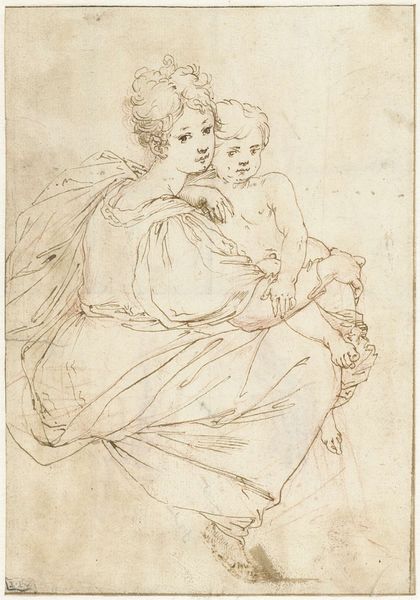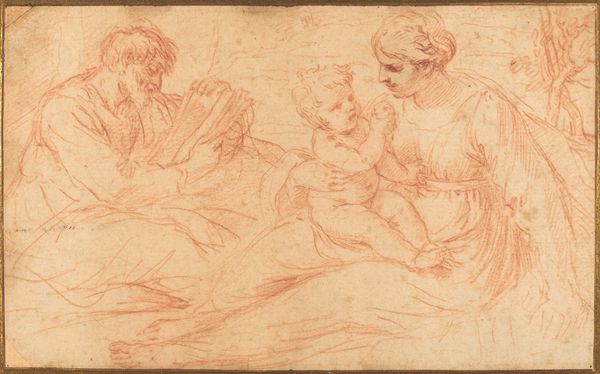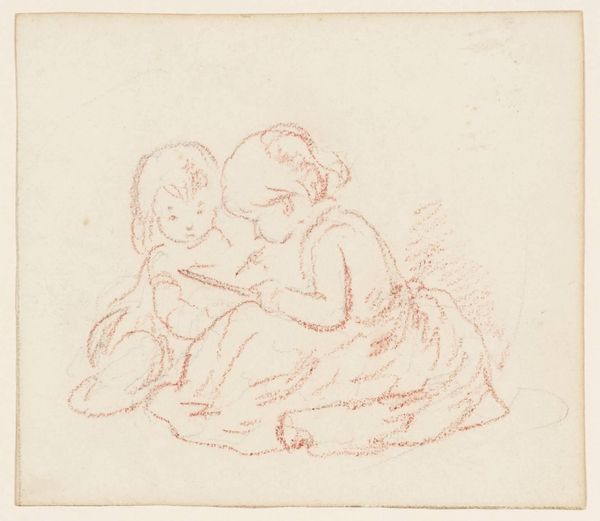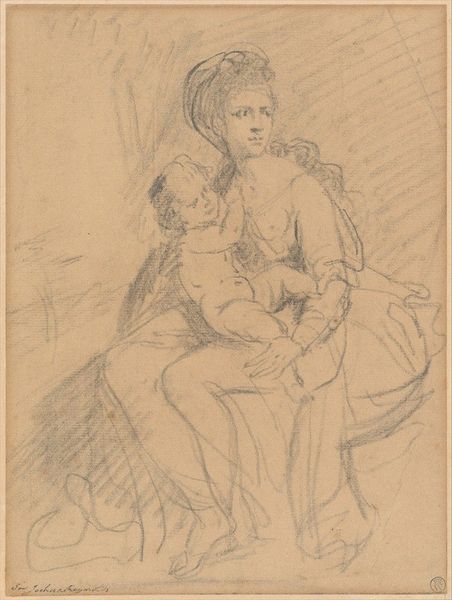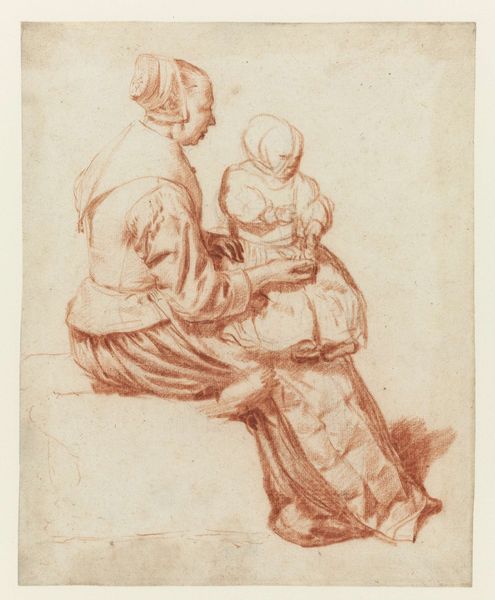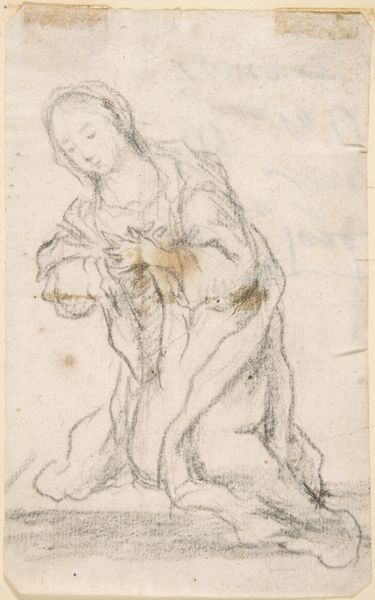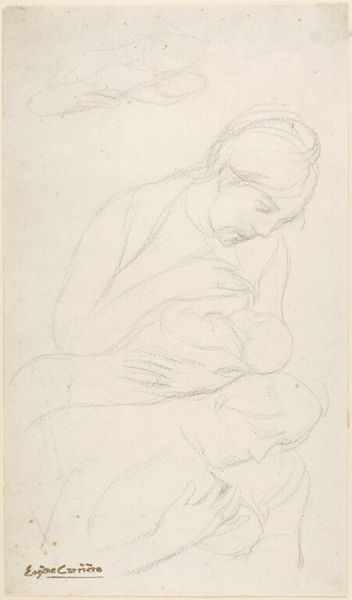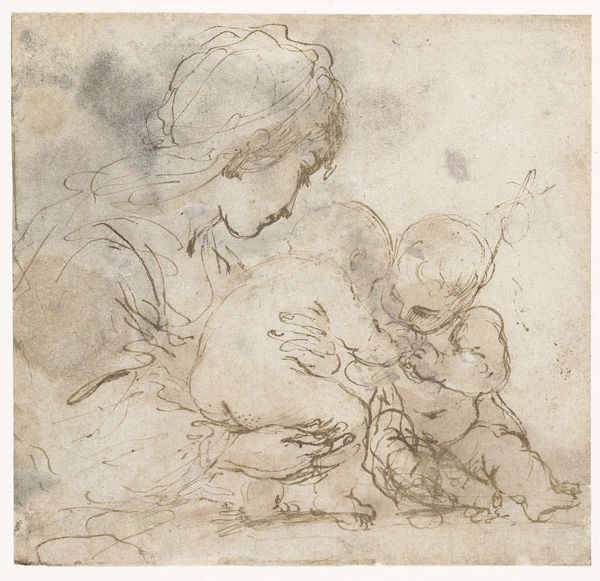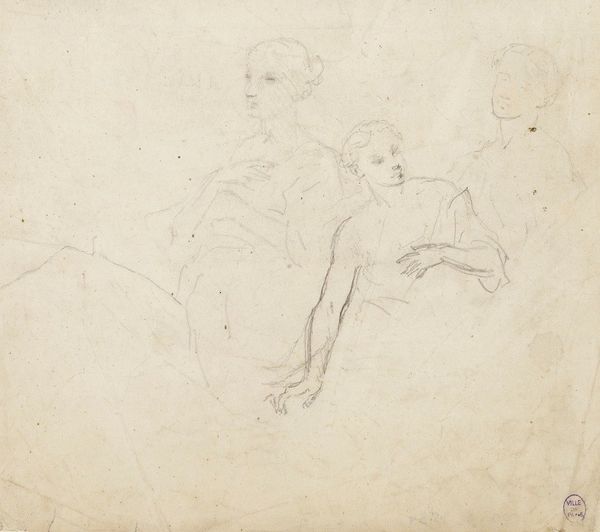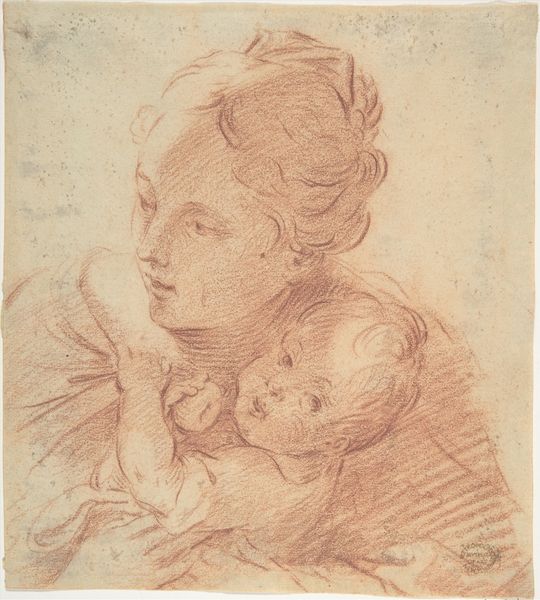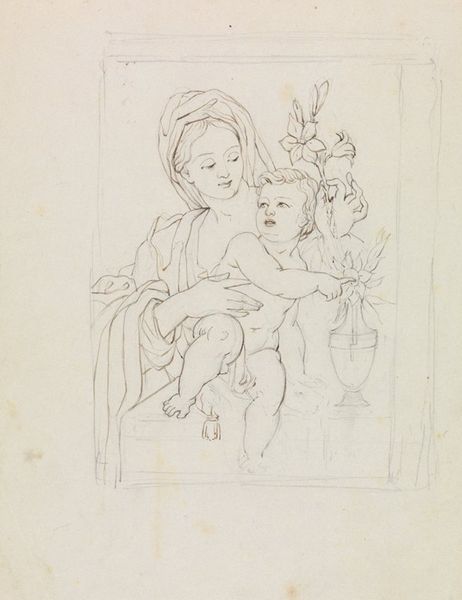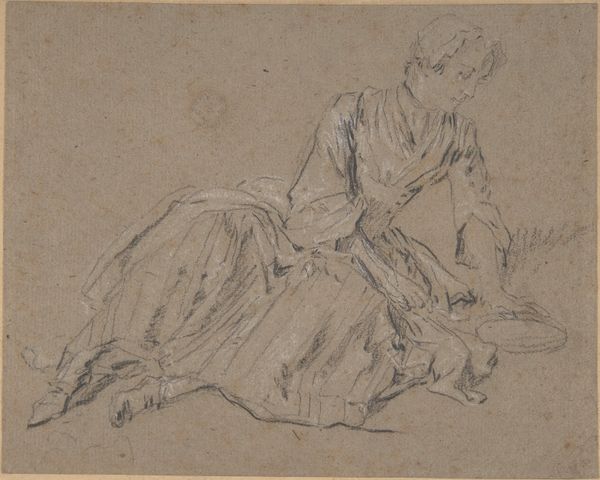
drawing, pencil
#
portrait
#
drawing
#
pencil sketch
#
figuration
#
11_renaissance
#
pencil
#
history-painting
#
academic-art
#
italian-renaissance
Dimensions: height 130 mm, width 155 mm
Copyright: Rijks Museum: Open Domain
Editor: Here we have Guido Reni’s "Study for Cimon and Pero," created with pencil between 1616 and 1620. The rawness of the sketch gives it a vulnerability that really grabs me. What do you see in this piece, especially considering its historical context? Curator: Absolutely. This drawing offers a lens through which we can examine the story of Roman Charity. Pero, defying societal norms, secretly breastfeeds her imprisoned father, Cimon, condemned to death by starvation. Reni captures a moment of profound female agency, disrupting patriarchal power. But it’s vital to critically examine the male gaze inherent in depicting this intimate act, even as it is framed as filial piety and female virtue. How do we reconcile that tension? Editor: I see what you mean. There's something almost performative about the presentation, even in this study. How might the Renaissance audience have perceived this image of female devotion? Curator: They would have likely seen an idealized version of womanhood, reinforcing expected roles of self-sacrifice. But we, armed with feminist perspectives, can challenge that reading. Is Pero's act truly selfless, or a radical act of defiance, reclaiming power within a system designed to oppress both her and her father? The act of breastfeeding here becomes an act of resistance. Editor: So, beyond the surface narrative, we're invited to consider the power dynamics at play and how depictions of women can both reinforce and subvert social expectations. That gives me a lot to think about. Curator: Precisely. By engaging with art through a critical, intersectional lens, we reveal the complexities of representation and the enduring relevance of these historical narratives. Editor: Thanks, I am beginning to understand the power that comes from viewing a classical artwork with a modern social context.
Comments
No comments
Be the first to comment and join the conversation on the ultimate creative platform.
